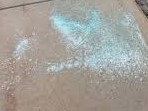 De-Icing Salts – While de-icing salt can be useful in the fact that they help to melt ice and prevent slips and falls removing the de-icing salts afterwards is important. Leaving them on the concrete over a long period of time can cause a plethora of expensive problems.
De-Icing Salts – While de-icing salt can be useful in the fact that they help to melt ice and prevent slips and falls removing the de-icing salts afterwards is important. Leaving them on the concrete over a long period of time can cause a plethora of expensive problems.
 Some examples of de-icing salts used:
Some examples of de-icing salts used:
- Magnesium Chloride
- Rock salt
- Calcium chloride
- Calcium magnesium acetate
Effects concrete both physically and chemically:
- Chemical
- Breaks down the chemical properties of the paste that is used to hold concrete together- causing decrease in strength of concrete
- Physical
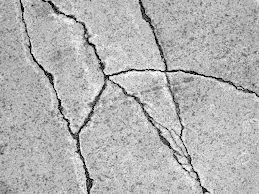 Cracks- When salt gets into the pores of the concrete water is drawn to the salt. As we all know once the water is in deep in the pores and it freezes outside the water freezes causing the concrete pores to expand and crack. Once the crack has started it just continues to get worse. More water is absorbed, causing an increased expansion, thus causing a larger crack and the cycle repeats itself.
Cracks- When salt gets into the pores of the concrete water is drawn to the salt. As we all know once the water is in deep in the pores and it freezes outside the water freezes causing the concrete pores to expand and crack. Once the crack has started it just continues to get worse. More water is absorbed, causing an increased expansion, thus causing a larger crack and the cycle repeats itself.- Discoloration- breaking down of molecules which changes the overall color of the concrete over time.
- Salt scaling – Salt crystals collect in the pores over time changing the osmotic pressure of the concrete, the greater the amount of solute ie. De-icing salts the more pressure that is created when water is flowing from an area of low concentration to an area of high concentration. This pressure causes the bumpy appearance in concrete known as tensile stresses in the concrete.
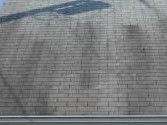 ORGANIC GROWTH – Fungus that grows
ORGANIC GROWTH – Fungus that grows
- Organic growth can be to humans in may different ways. The quicker it is removed the less damage it creates to the human body.
- Organic growth can be on our houses, in our houses, and on all types of surfaces.
- Organic growth can cause symptoms from watery eyes, runny nose, allergy like symptoms, asthma flare ups, mold infections to people who have a suppressed immune system and many other harmful effects.
- Killed using sodium hypochlorite
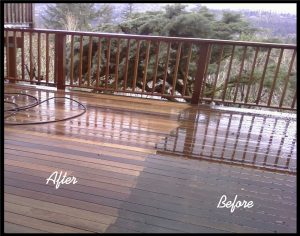 Wood and Deck Restoration – Most people don’t realize it but wood cells age causing the wood to turn a grey color. What do you do? Most people believe that you must replace the entire fence or deck. This will cost you hundreds or thousands of dollars in material and hundreds of dollars in labor or time and frustration to do it yourself. What if I told you that you could keep your same wood and make it look brand new for a reasonable price?
Wood and Deck Restoration – Most people don’t realize it but wood cells age causing the wood to turn a grey color. What do you do? Most people believe that you must replace the entire fence or deck. This will cost you hundreds or thousands of dollars in material and hundreds of dollars in labor or time and frustration to do it yourself. What if I told you that you could keep your same wood and make it look brand new for a reasonable price?
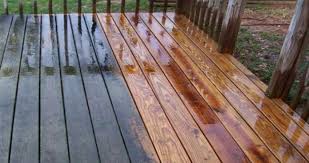 Wood is like our bodies. If you allowed the dead skin cells to stay on your body and you never washed it your body would become dull along with lots of other issue. Now let’s say you took a shower and you scrubbed those cells off. Your skin will glow again. This is how wood works. When you use the right amount of pressure with the right amount of cleaner and a brightener your wood looks brand new again.
Wood is like our bodies. If you allowed the dead skin cells to stay on your body and you never washed it your body would become dull along with lots of other issue. Now let’s say you took a shower and you scrubbed those cells off. Your skin will glow again. This is how wood works. When you use the right amount of pressure with the right amount of cleaner and a brightener your wood looks brand new again.
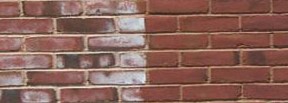 Efflorescence – a crystalline salty deposit that occurs on surfaces of brick, concrete and other masonry
Efflorescence – a crystalline salty deposit that occurs on surfaces of brick, concrete and other masonry
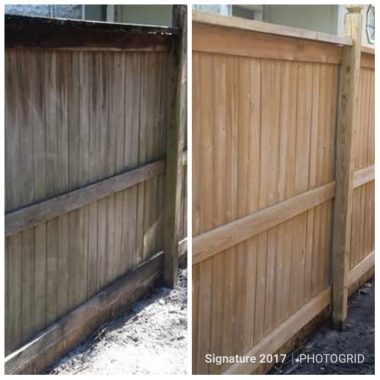
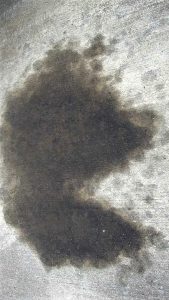 Oil – most are crude oils which consist of hydrocarbons
Oil – most are crude oils which consist of hydrocarbons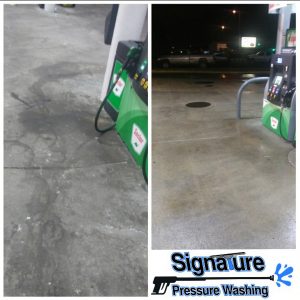
 De-Icing Salts – While de-icing salt can be useful in the fact that they help to melt ice and prevent slips and falls removing the de-icing salts afterwards is important. Leaving them on the concrete over a long period of time can cause a plethora of expensive problems.
De-Icing Salts – While de-icing salt can be useful in the fact that they help to melt ice and prevent slips and falls removing the de-icing salts afterwards is important. Leaving them on the concrete over a long period of time can cause a plethora of expensive problems.
 Cracks- When salt gets into the pores of the concrete water is drawn to the salt. As we all know once the water is in deep in the pores and it freezes outside the water freezes causing the concrete pores to expand and crack. Once the crack has started it just continues to get worse. More water is absorbed, causing an increased expansion, thus causing a larger crack and the cycle repeats itself.
Cracks- When salt gets into the pores of the concrete water is drawn to the salt. As we all know once the water is in deep in the pores and it freezes outside the water freezes causing the concrete pores to expand and crack. Once the crack has started it just continues to get worse. More water is absorbed, causing an increased expansion, thus causing a larger crack and the cycle repeats itself. ORGANIC GROWTH – Fungus that grows
ORGANIC GROWTH – Fungus that grows
